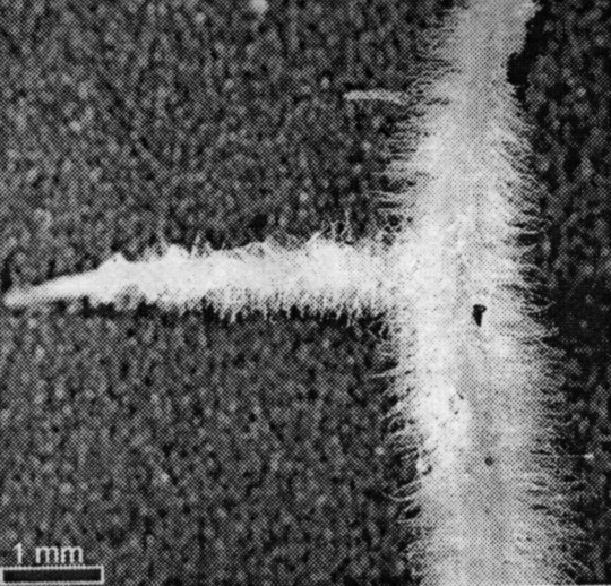Journal of Creation 34(1):10, April 2020
Browse our latest digital issue Subscribe
Plants feeding on quartzite support rapid plant growth after the Flood

Once the continents emerged above water during the Recessional stage of the Flood, plants likely started growing on the newly exposed land.1 Log and vegetation mats that contained seeds, spores, and plant debris including roots would have been left on the new land. These mats would also have floated on the oceans for many years after the Flood, dispersing animals and vegetation to many land areas.2,3
These factors explain why the dove returned to the Ark with a fresh olive leaf approximately 120 days after the Ark landed (Genesis 8:10–11). Olive trees would have been among the first to grow, since they can germinate by vegetative propagation from a branch as well as by seeds. Noah waited another 101 days before he released the animals from the Ark. This waiting period gave enough time for seeds to germinate and grow enough to provide food for the animals.
Plants and trees can recover fast on devastated land. Despite dire predictions of a long-lasting sterile landscape, the recovery of Mount St Helens after the 1980 eruption shocked scientists and demonstrated to the world just how fast nature can recover after a disaster.4
Some plants discovered feeding on quartzite
Another mechanism for fast plant growth has recently been discovered on a nearly sterile landscape in Brazil.5,6 Quartzite, a metamorphic sandstone that is almost pure quartz, makes up the bedrock of a region called campos rupestres (Portuguese meaning ‘rocky grasslands’). The soil from this area is shallow and patchy with nearly undetectable levels of nutrients needed by plants. However, it sustains more than 5,000 plant species! Some of the plants even survive on bare patches of quartzite bedrock.
Quartzite is almost pure silica and has extremely little phosphorus, one of the main elements needed for plant growth. But despite the very low amount of phosphorus, roots from plants of the Velloziaceae family bore into the quartzite to obtain it. This is a never-before observed root specialization. The roots, which are very hairy (figure 1), penetrate the quartzite at least 10 cm along former sandstone bedding planes. The roots give off acids that dissolve the rock.
A byproduct of this root specialization is that it increases weathering and soil formation. This helps other plant species to colonize the area and accounts for the observed diversity of plants in this nutrient-deprived area.
Plants in other areas also have specialized roots for obtaining nutrients
The researchers mention that other plants in campos rupestres and in other areas of the world have different root specializations that take advantage of limited nutrients in the soil, including in other nutrient-poor landscapes:
“Similar processes are likely occurring in other landscapes. For example, roots of Pinus sylvestris are capable of dissolving apatite, and this process may involve mycorrhizal symbionts.”7
Implications
We are increasingly discovering that many of the plants that colonized the earth after the Flood had root specializations that would have aided growth in even nutrient-poor soil or bare rock. This reflects a creation usefully designed to bounce back from a calamity, e.g. the Genesis Flood. In the case of the Velloziaceae family, even bare quartzite rock produced growth. The combination of newly laid soil, scattered seeds that survived the Flood, log mats, and the unique ability of plants to squeak out nutrients from unlikely places all add up to a rapid recovery of the earth’s vegetation after the Flood.
References and notes
- Walker, T., A biblical geologic model; in: Walsh, R.E. (Ed.), Proceedings of the Third International Conference on Creationism, technical symposium sessions, Creation Science Fellowship, Pittsburgh, PA, pp. 581–592, 1994; biblicalgeology.net/. Return to text.
- Wood, T.C. and Murray, M.J., Understanding the Pattern of Life: Origins and organization of the species, Broadman & Holman Publishers, Nashville, TN, pp. 187–203, 2003. Return to text.
- Wise, K.P. and Croxton, M., Rafting: a post-Flood biogeographic dispersal mechanism; in: Ivey Jr., R.L. (Ed.), Proceedings of the Fifth International Conference on Creationism, technical symposium sessions, Creation Science Fellowship, Pittsburgh, PA, pp. 465–477, 2003. Return to text.
- Swenson, K. and Catchpoole, D., After devastation … the recovery: an amazing bounce-back after catastrophe gives us insights into how the world recovered from the Flood, Creation 22(2):33–37, 2000; creation.com/after-devastation-the-recovery. Return to text.
- Teodoro, G.S. et al., Specialized roots of Velloziaceae weather quartzite rock while mobilizing phosphorus using carboxylates, Functional Ecology 33:762–773, 2019. Return to text.
- Law, Y.-H., Some plants munch on rocks: hairy roots and acids help extract phosphorus, Science News 185(11):9, 2019. Return to text.
- Teodoro et al., ref. 5, p. 770. Return to text.
- Teodoro et al., ref. 5, p. 767. Return to text.



Readers’ comments
Comments are automatically closed 14 days after publication.